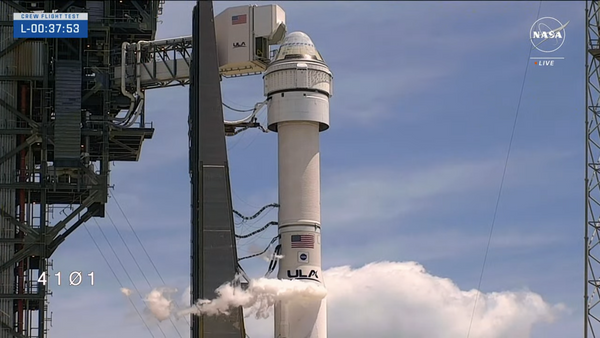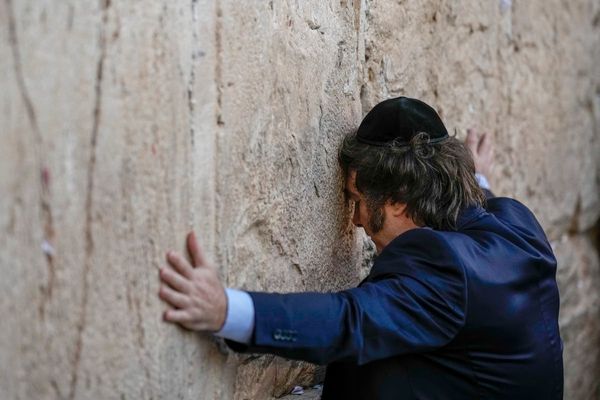The dramatic and shocking renewal of hostilities in Israel and the Palestinian territories over the weekend has dominated traditional and social media outlets as viewers and readers seek to understand the rapidly moving events. Within hours of the Hamas incursion into Israel from Gaza, The Conversation published analysis by academic researchers. Conversation content is always grounded in such expertise.
As ever at these moments, we receive many pitches from within our global academic community. Our journalists are engaging with potential authors to provide extensive coverage of this issue through the week and beyond. We thought it may be useful to produce a rolling guide to the articles and audio we’re publishing, giving you a single place to catch up on all our analysis and explanation on the subject from across the network.
Unlike our articles, this page is updating from the top, so older references will be moved down the page as the week moves on and newer pieces of content are published. As a start point it might be useful to check in on our Monday morning Global newsletter which includes a brief note from me, also posted at the bottom of this page, plus links to five articles we published over the weekend and early on Monday.
Latest content
While I don’t want to preempt what Wednesday’s piece via Paris will say, it seems inevitable that to some degree it will consider how the impact of the conflict on children. That’s a subject also picked up just now, by Jason Hart, Professor of Humanitarianism and Development at the University of Bath in the UK.
“He writes: The indiscriminate launch of rockets into Israel has exposed children there to trauma, injury and death. Meanwhile, countless Palestinian children die in bombardments of the Gaza Strip. In the West Bank and East Jerusalem, the killing of Palestinian children is a frequent occurrence that invariably goes unpunished.
"Yet a 1977 addition to the Geneva conventions (article 77) states that: ‘Children shall be the object of special respect and shall be protected against any form of indecent assault.’
"It goes on to say that the opposing sides should provide children with ‘the care and aid they require’. But there is scant evidence of this care being shown by either Hamas or Israel.”
I’ve been talking to editors across the network today about what’s coming up. Among them is Fabrice Rousselot, Editor-in-Chief of The Conversation France. He described an article that will be published on Wednesday by a scholar was has just returned from Gaza, who will look at the appeal of Hamas to some young Palestinians. What is it that drives them to commit acts of terror?
And I can see our Brazilians colleagues have now made the Parmeter article available in Portuguese.
The Samy Cohen article flagged below has now been translated into English by the French edition of The Conversation. Meanwhile, the Parmeter piece has moved into Spanish, courtesy of our Madrid team.
I mentioned this piece by Ian Parmeter yesterday. He’s now recorded an interview with our regular columnist and podcaster in Australia, Michelle Grattan. It’s about 25 minutes long, but well worth dipping into. Parmeter is a former Australian ambassador to Lebanon, and held a series of diplomatic posts in the region. He’s now a Research Scholar at the Centre for Arab and Islamic Studies, Australian National University.
His observations include: The difficulty for Israel is that in cutting off food, electricity and water, you could have after a relatively short time a humanitarian disaster unfolding among civilians in Gaza […] Israel has a difficult problem with its international relations in the sense that the peace process [with Palestine] has effectively stopped working - Israel is seen by many in the West as a country which is not doing enough to try to resolve the peace process.
He’s also particularly interesting on the role of Hezbollah and Iran, and on what he feels is the real chance Netanyahu could struggle to hang on to power.
It’s now Tuesday morning, 8.45am in London where I am and 10.53am in Jerusalem. Three days have passed since the concerted series of Hamas terror attacks on Israel began. Since then, Israel has mounted retaliatory strikes on Gaza, with the promise of more to come. There are reportedly hundreds dead on both sides, thousands displaced and hostages being held. Academic researchers continue to analyse developments on The Conversation. We will abbreviate, update and link to their work here through the day. Scroll down for summaries of all content published since hostilities began. Remember, all Conversation content is free to read, and to republish.
If you are a reader of French head straight to this Q&A with Samy Cohen, emeritus research director at Sciences Po (CERI), published by our team in Paris. It can, of course, also be read in English through browser translate tools. He’s particularly interesting on the political challenge facing Netanyahu and is pessimistic about the prospect of the hostages being released soon. I’ve pulled out a couple of key quotes:
Netanyahu has said he wants to form a government of national unity; Is it possible? SC: It will be complicated. Former Prime Minister Yaïr Lapid demanded, in return for his possible entry into government, the departure of the ultra-religious. But can Netanyahu do without them? It is possible that they will reach a compromise on this matter. Today, he has donned the costume of a warlord and is showing off his muscles, claiming that he will destroy Hamas …
Is that possible? SC: No.
What will Hamas do with all the hostages it took to Gaza?
SC: Currently, Hamas has no interest in negotiating the release of the hostages. Imagine, simply hypothetically, that the movement obtains the release of all its prisoners who are currently in prison in Israel, and releases the Israeli hostages it is holding. It would then lose a formidable human shield
What Hamas terror seeks to achieve
UK editors have posted an article by Michele Groppi of the Defence Studies Department at King’s College London. He writes:
“In a twisted way, Hamas arguably needs this escalation. In the past weeks, growing numbers of Gazan residents have reportedly been protesting the group’s leadership, accusing it of corruption and failing to improve living conditions. But most importantly, the growing possibility of an agreement between Israel and Saudi Arabia would be a tremendous blow to Hamas’s credibility within the Islamic world because it would directly contradict its anti-Israel position.
"Hamas can divert Palestinian attention away from its problems and score points in its competition with the rival Palestinian Authority (PA). If Israel attacks, Hamas will silence criticism coming from PA and others in the West Bank, who will never side with Israel, rallying the Palestinian population around its flag.”
Al-Aqsa
The name chosen by Hamas for their attacks against civilians and military forces – Operation Al-Aqsa – references the mosque that has become symbolic of the conflict between the Israelis and Palestinians. Al Aqsa is widely recognised as the third holiest site in Islam, but sits of a hill of important significance to Jews, the Temple Mount. Three years ago we published an article on why Al-Aqsa is such a sensitive site and at the heart of tension between numerous groups of various faiths in the city. Editors in Boston, working with the author Ken Chitwood, of the Center for Religion and Civic Culture at University of Southern California, have now updated this article. Do check it out.
Translations
Of those articles below, a number have moved into langauges other than English, and, as with all Conversation content, are available for republication free. Our Paris bureau is leading on a translation of the Mayroz article. And thanks to our operations in Spain and Brazil, it is also available in Spanish and Portuguese. The Pilkington article is also running in Spanish.
Initial articles
The first piece we published in the aftermath of the Hamas assaults was this, by Eyal Mayroz, Senior Lecturer in Peace and Conflict Studies at the University of Sydney. He highlighted an apparent intelligence failure on the Israeli side, covered the news as it was breaking, drew parallels with the opening hours of the 1973 Yom Kippur War, pointed to the shocking capture of civilian hostages and warned of the risk of escalation.
There followed two articles from our US bureaux, including this, by Dov Waxman, a Professor of Israel Studies, at the University of California, Los Angeles, which goes into the Yom Kippur comparison and legacy in more detail.
“There are at least three possible outcomes to the war, and they all play in Iran’s favor.”
From Canada, Michael J. Armstrong, Associate Professor, Operations Research, at Brock University has been researching rocket defenses and missile combat for years. “But the intensity of the Hamas attack this time was astounding,” he wrote.
“The barrage wasn’t restricted to border areas. It reached across southern and central Israel, including the suburbs of Tel Aviv.”
He concluded: “While civilians in both Israel and Gaza are already mourning the deaths of hundreds, there is likely more bloodshed to come.”
On Monday, our editors in Melbourne commissioned Ian Parmeter, a researcher at the Centre for Arab and Islamic Studies, Australian National University. He considered the tactics, strategy and motivation behind the Hamas attacks.
“Significantly, Hamas has named its action "Operation Al-Aqsa Flood”. This provides some clues to the primary reason for striking at this time, which emphasises what Hamas sees as Israeli acts of desecration of a holy Islamic site.
“However, an additional motivating factor was likely the increasing tendency of Arab states to make peace agreements with Israel, as evidenced by the 2020 Abraham Accords, involving the United Arab Emirates, Bahrain, Sudan and Morocco.”
Monday newsletter note
Edited version of the newsletter note from Monday, October 9:
A few weeks ago, The Conversation published a three-part podcast series marking the 30th anniversary of the Oslo Accords which sought to bring peace to the Middle East and deliver a two-state solution to the decades-old conflict between Israel and the Palestinians. In it, leading negotiators and intermediaries from that period lamented the lost opportunity, and warned that matters were likely to deteriorate, rather than improve.
That deterioration came at the weekend, in the most rapid and shocking way. The scale, speed and nature of the attacks launched by Hamas from Gaza, across into Israel, were unexpected. The targeting of civilians, killed or taken back into Gaza as hostages, has been a grim hallmark of the attacks.
Here, you will find a series of reaction articles, commissioned by our editors around the world and written by experts on conflict and the Middle East. In the days to come we will of course publish more from across our network and in multiple languages.
This article was originally published on The Conversation. Read the original article.







